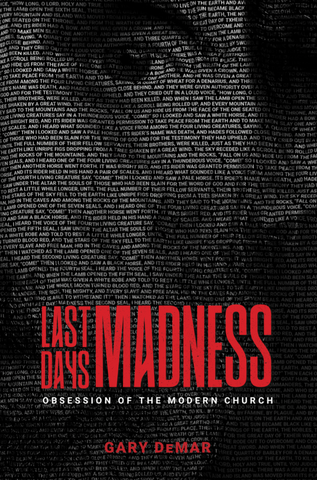Gary responds to a video where a pastor claims you must “rightly divide the Bible,” based on 2 Timothy 2:15. By this he means that you must rightly divide the “people” of God into Jew and Gentile and understand New Testament passages in light of “the Church age.”
How could Christians believe that Jesus could come at any moment and also believe that He would not come until the last of the seven representative churches (Laodicea) appeared? This destroys the dispensationalist’s doctrine of imminency, the any-moment rapture of the church. It also destroys literalism since the seven churches are purported to represent seven distinct periods of the church age, not individual churches. William Hendriksen comments on the seven churches/seven ages view:
The notion that these seven churches describe seven successive periods of Church history hardly needs refutation. To say nothing about the humorous—if it were not so deplorable—exegesis which, for example, makes the church of Sardis, which was dead, refer to the glorious age of the Reformation; it should be clear to every student of Scripture that there is not one atom of evidence in all the sacred writings which in any way corroborates this thoroughly arbitrary method of cutting up the history of the Church and assigning the resulting pieces to the respective epistles of Revelation 2 and 3.13.
According to dispensationalists, the rapture is a two-stage event: Jesus comes for His saints before the seven-year tribulation period and with His saints at the end of the tribulation period to defeat antichrist and set up the millennial kingdom (Revelation 19). But there is no mention of the church in Revelation 19 following Jesus on His “white horse” (19:11). The “armies of heaven,” not the church, follow Jesus on their “white horses” (19:14). If dispensationalists maintain that the “armies of heaven” are the church or saints, then this only shows that the word church does not have to appear for it to be present. A final point needs to be made. Dispensationalists teach that Jesus coming on “a white horse” in Revelation 19 is the second coming. Robert L. Thomas is a representative of this popular position:
This picture climaxes the NT emphasis on the second coming of Christ as the fulfillment and vidication of the Christian hope (e.g., Matt. 13:41–42; 25:41; Rom. 2:5; 2 Thess. 1:7–8, 9–10; 2:8) . . . . It answers specifically to the theme verse of Rev. 1:7 which tells of the worldwide audience this event will have (cf. Matt. 24:27–31). . . . In fact, this is the only event in Revelation that corresponds to that coming narrowly construed to refer to Christ’s personal coming.
In Acts 1:9–11 we are told that “a cloud received Him out of their sight” (1:9). No horse was involved. “This Jesus, who has been taken up from you into heaven, will come in just the same way as you have watched Him go into heaven” (1:11). Jesus did not go into heaven on a horse, and He will not return on a horse.
Like the dispensational hermeneutical methodology in general, the pre-tribulational rapture doctrine is a gigantic hoax. Because the pre-tribulational rapture is a pillar of the dispensational system, we should expect to find proof of its existence in clear texts. Even one text would suffice. There is not a single passage that clearly and dogmatically supports a pretribulational rapture. If so many people believe the pre-tribulational rapture doctrine, why is it that no verse can be appealed to that explicitly teaches it? Most pre-tribulationists have never been challenged to produce a verse.

Last Days Madness
In this authoritative book, Gary DeMar clears the haze of "end-times" fever, shedding light on the most difficult and studied prophetic passages in the Bible, including Daniel 7:13-14; 9:24-27; Matt. 16:27-28; 24-25; Thess. 2; 2 Peter 3:3-13, and clearly explaining a host of other controversial topics.
Buy NowGary responds to a video where a pastor claims you must “rightly divide the Bible,” based on 2 Timothy 2:15. By this he means that you must rightly divide the “people” of God into Jew and Gentile and understand New Testament passages in light of “the Church age.” The Bible never speaks of a “Church age” but this does not prevent many from claiming that it must be there all the same. They claim it is inferred and is the “key” to correctly interpreting Jesus’ prophetic words in the Olivet Discourse.

